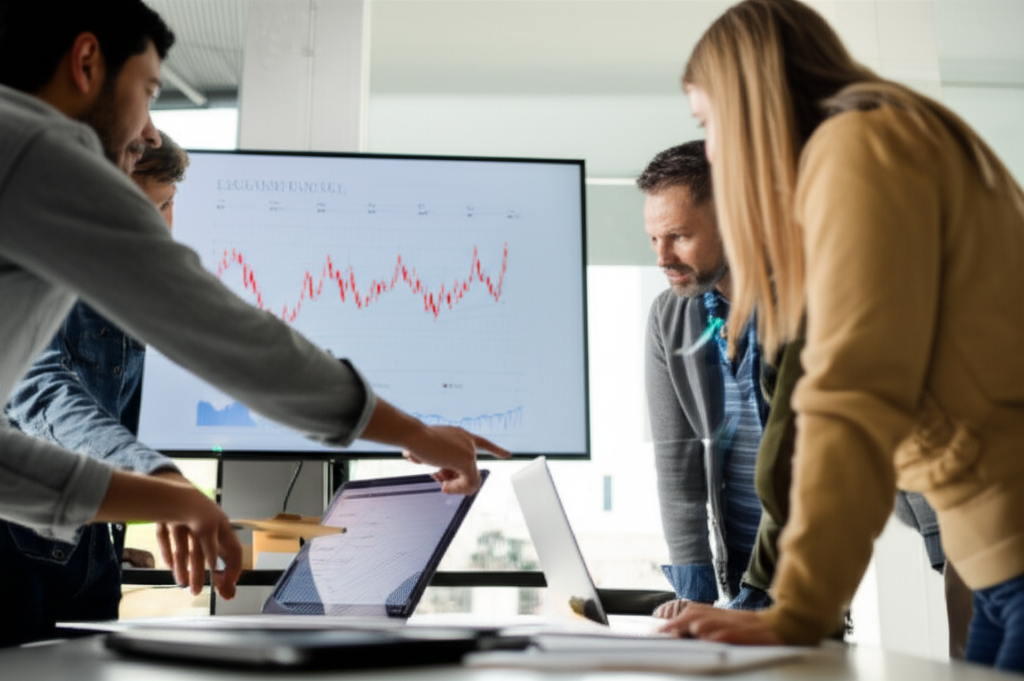Stock Market’s Calm Response May Signal More Upside
In the tumultuous landscape of global economics, moments of unexpected tranquility in financial markets often prompt as much speculation as periods of wild volatility. Lately, despite lingering concerns over inflation, interest rates, and geopolitical tensions, the stock market has exhibited a remarkable composure. This calm response, far from being a mere lull, is increasingly being interpreted by analysts and investors alike as a potential precursor to further upside, suggesting a deeper resilience beneath the surface. For young adults navigating their nascent investment journeys, understanding this nuanced market behavior is crucial to forming a robust long-term financial perspective.
Historically, major economic shifts or geopolitical events typically trigger sharp market reactionseither precipitous drops or enthusiastic rallies. However, in recent months, the equity markets have absorbed a series of significant data points and headlines with an almost stoic demeanor. Inflation, while still elevated, has shown signs of moderation; central banks, while maintaining a hawkish stance, have hinted at a more measured pace of rate adjustments; and corporate earnings, though varied, have largely avoided a widespread downturn. This ability of the market to shrug off potentially negative news, or at least not succumb to panic, is a key characteristic of the current environment. One primary reason for this apparent tranquility is the market’s evolving expectations regarding monetary policy. Investors have largely priced in the Federal Reserve’s anticipated rate hikes, meaning that unless there are significant deviations from the expected path, these announcements no longer come as a shock that triggers sell-offs. Furthermore, a resilient labor market and relatively robust consumer spending, particularly in certain sectors, indicate that the underlying economic engine, while perhaps decelerating, is far from stalling. This fundamental strength provides a crucial bedrock for equity valuations, preventing severe contractions even when headwinds gather. Moreover, the “calm before the storm” narrative can sometimes be misplaced. Instead, what we might be observing is a market that has already discounted a significant amount of negative news, or one that is increasingly forward-looking, anticipating an eventual pivot in monetary policy or a stronger economic recovery on the horizon. This long-term perspective, often adopted by institutional investors, can smooth out short-term fluctuations and contribute to a sense of stability. The return of retail investors, particularly younger demographics, who are increasingly engaging with the market through accessible platforms, also plays a role. Their collective “buy the dip” mentality and long-term accumulation strategies can provide a consistent floor for asset prices, absorbing selling pressure.
However, interpreting market calm as a definitive signal for “more upside” requires careful consideration. While the absence of panic suggests underlying strength and a potential for growth, it doesn’t negate existing risks. Stubborn inflation, an unexpected hawkish shift from central banks, unforeseen geopolitical escalations, or a deeper-than-anticipated corporate earnings recession could still disrupt this placid surface. Therefore, while the current tranquility may indeed be a green light for continued upside, particularly as investor sentiment improves and capital is deployed, it simultaneously calls for a vigilant approach. Investors, especially those building their foundational portfolios, should remain attuned to economic indicators, central bank communications, and company-specific fundamentals. The market’s current composure might be a testament to its adaptive nature and underlying health, but it also underscores the importance of informed decision-making and a well-diversified strategy. For young adults looking to grow their wealth, this period offers a valuable lesson in market psychology: sometimes, the most profound signals are found not in dramatic swings, but in the quiet endurance of the market itself. This resilience, if sustained, certainly points towards a potentially constructive path forward, where measured optimism can coexist with strategic caution.
—





